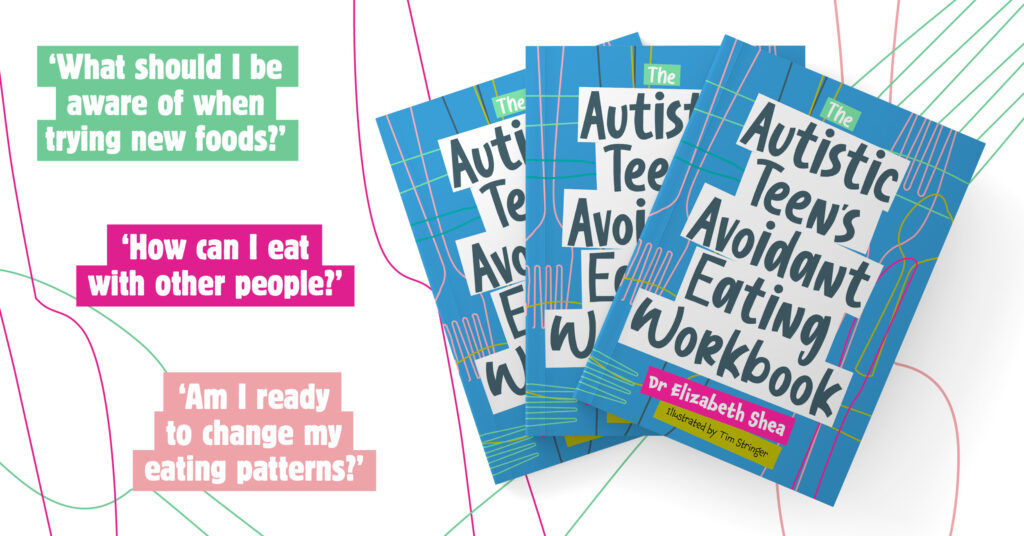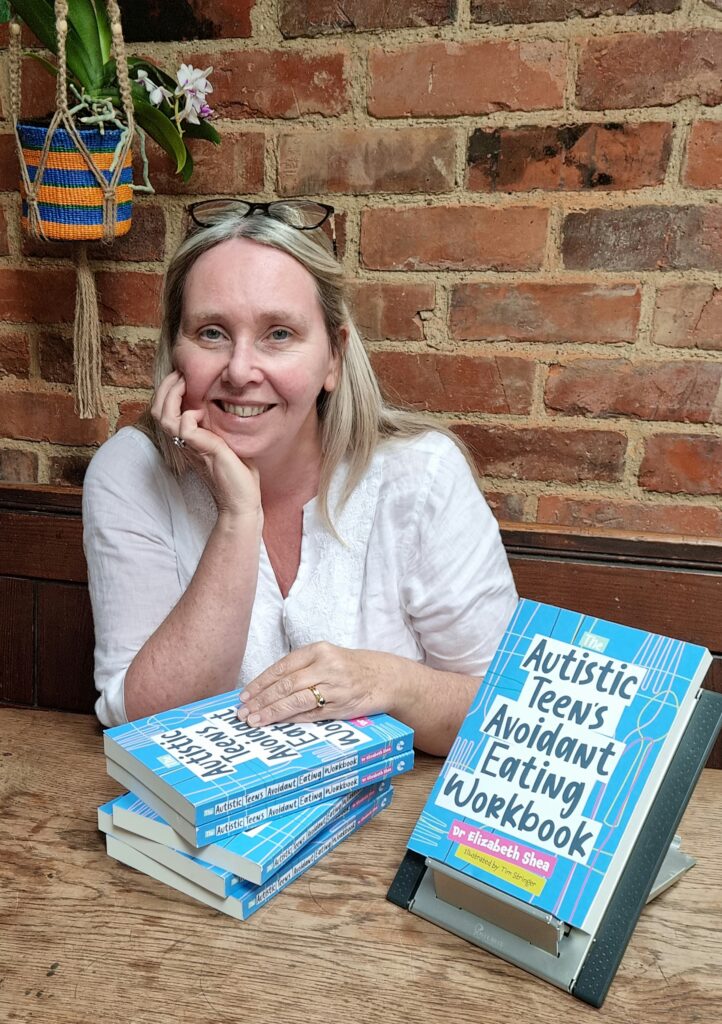Exclusive extract from The Autistic Teen’s Avoidant Eating Workbook!

Find out about ‘neophobia’ and how it contributes to avoidant eating in this special sneak peek into Dr Elizabeth Shea’s new book.
Anxiety, Stress & Avoidant Eating
Imagine I’ve put a new food in front of you and asked you to try it. How do you feel?
If this would be too hard or make you anxious, you are not alone; many other autistic and neurodivergent teenagers also find trying new foods difficult. Why? All young children go through a stage where they are anxious about new foods. This is called ‘neophobia’ and is another brain signal designed to protect children from eating anything new that might be dangerous. As children grow up, neophobia goes away; this is because children learn which foods are safe by watching others eat.
Survival of the fittest
Scientists think neophobia has been around for thousands of years. Along with disgust and contamination, it helped early humans stay safe when they hunted and gathered their food. Anyone who ate something new that no one else had eaten before might have died, so neophobia actually helped humans to survive. So if anyone ever says you are ‘weird’ because you can’t try a new food, tell them about neophobia and that this means you have the best survival skills!
Many autistic and neurodivergent teens find that neophobia didn’t go away as they grew up and they are still anxious about trying anything new. If this is you, then don’t worry. The good news is that as you enter your teens, it actually becomes easier to overcome neophobia.
Let’s talk about mealtimes now. What are these like for you? Do you hate sitting with other people? Does the sight and smell of other foods make you feel disgusted? Are you worried someone will make you eat something you don’t want to eat? Do you want to run away? Is it easier if you can eat by yourself?
Many autistic and neurodivergent people find mealtimes difficult. This is because being with other people and social interactions can be hard, and too much sensory information can cause sensory ‘overload’. This is where too much sensory information comes in for your brain and body to cope with. Sensory overload causes shutdown, panic and anxiety.
Chapter 4 will explain more about the impact of anxiety and stress on avoidant eating and help you manage this. Chapter 6 will help you learn how to eat with other people and reduce sensory overload to make mealtimes more enjoyable.
Who is this book written by?

My name is Elizabeth Shea and I work as a clinical psychologist. I’ve written this book because I’ve spent many years working with people of all ages who have issues with avoidant eating. Many of these people are autistic or neurodivergent. I’ve learnt that eating difficulties can be very hard for those people and their families (can you imagine another difficulty that happens as often as eating?). I’ve also learnt that there needs to be more information about why these issues happen and what can be done to help.
I’ve already written one book about avoidant eating for parents, carers and professionals. This book is just for young people themselves. My intention is that it supports you to see that your eating pattern is not your fault. This is a workbook that will empower you to learn the skills for change. Most of all, it will give you the confidence to believe, just like Rachel, that you can make the changes you want.
Good luck and happy reading!
The Autistic Teen’s Avoidant Eating Workbook by Dr Elizabeth Shea publishes on 21st September. You can pre-order your copy now via JKP.com, get your copy here.